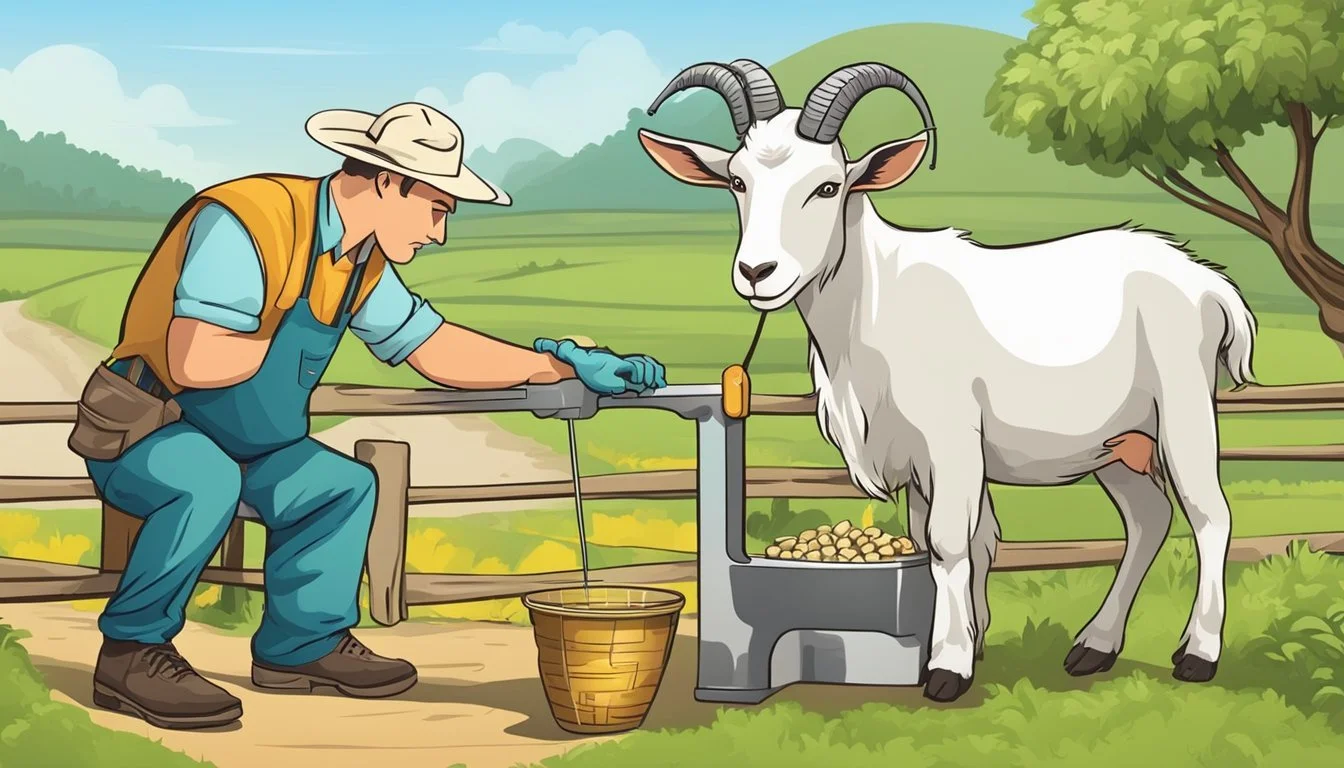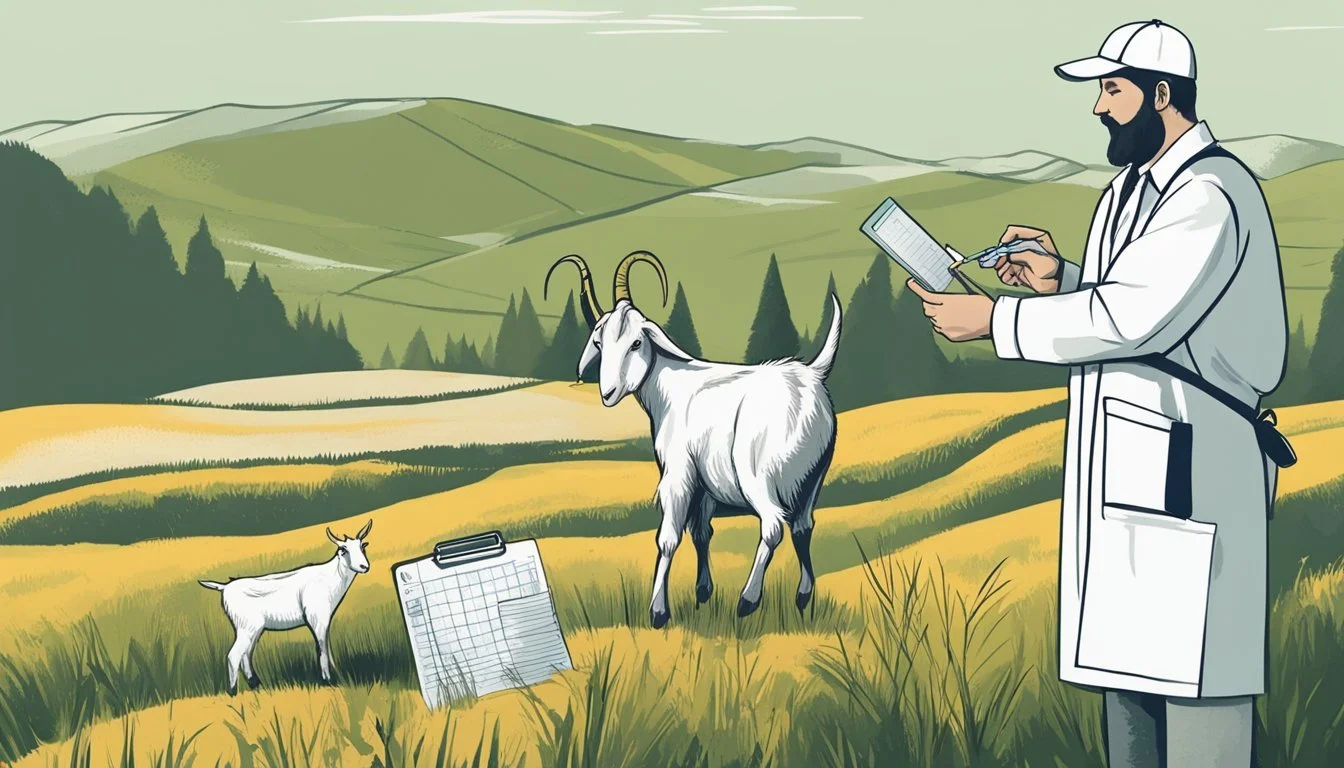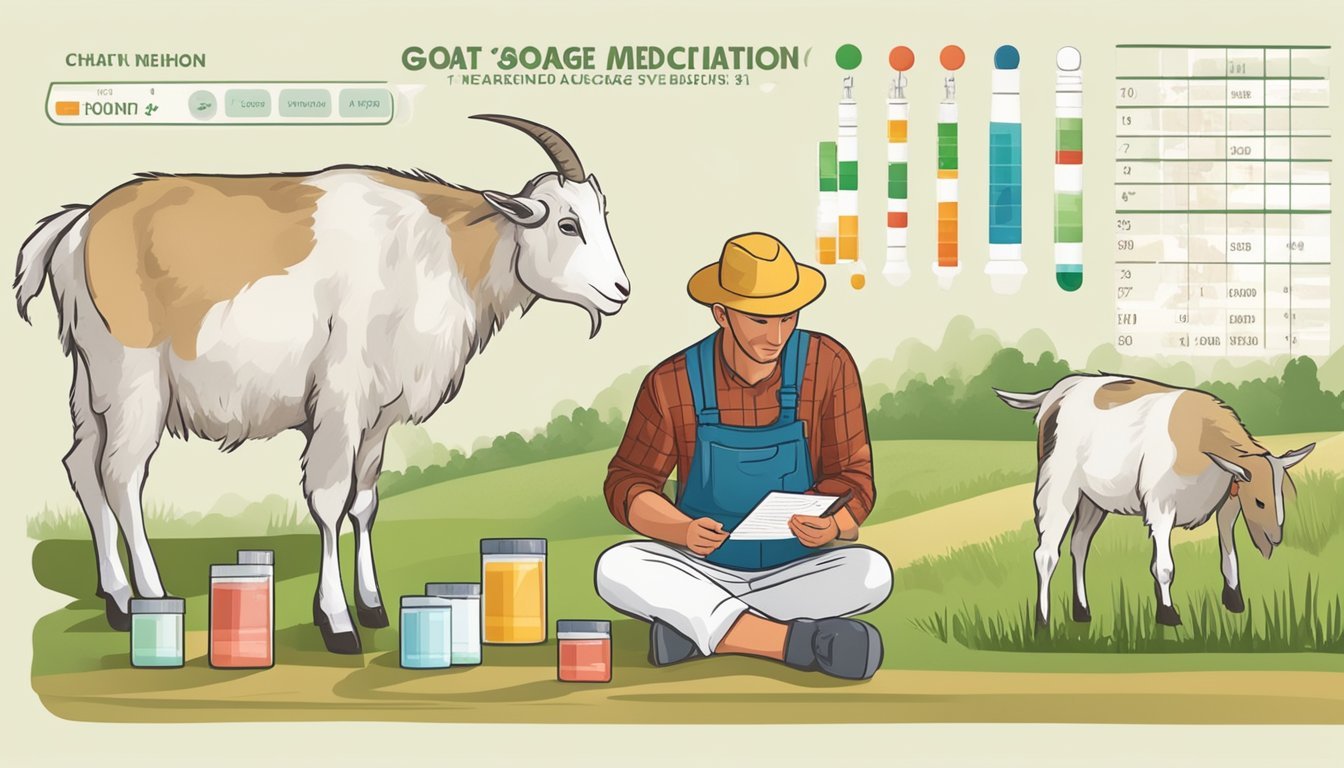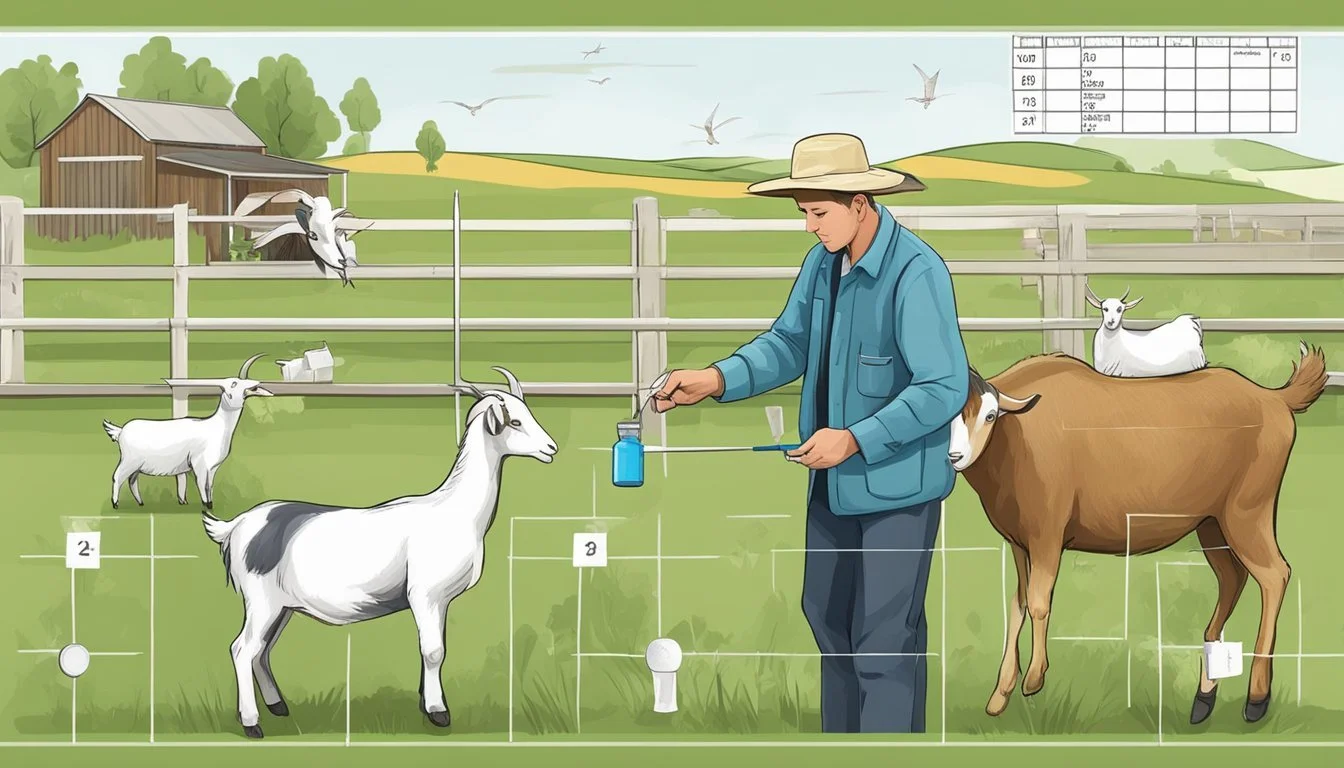How do I Determine the Correct Dosage of Medication for Goats
A Comprehensive Guide
Determining the correct dosage of medication for goats is a crucial step to ensure their health and well-being. Goats are unique in how they metabolize drugs, often requiring different dosages than other livestock. Over or under dosing can lead to ineffective treatment or drug resistance. It's important for goat keepers to understand how to accurately calculate the necessary amount of medication based on the goat's specific weight, the medication's concentration, and the recommended dosages for goats.
To assess the appropriate dosage, it is essential to weigh the goat and consult the medication's label for dosage instructions. However, it's worth noting that some medications' labels might not provide information for goats specifically. In these cases, consulting a veterinarian who is experienced with caprines is imperative. They consider factors such as the animal's health condition, the purpose of the medication, and the potential for side effects alongside the manufacturer's recommendations.
Using a fecal egg count test can help determine the parasite burden which may influence medication dosage, especially in the case of dewormers. This approach ensures a targeted and efficient treatment regimen, reducing the chance of administering an incorrect dose. Proper dosing not only treats the existing condition but also helps in the prevention of drug resistance, ensuring the long-term efficacy of medications used within a goat herd.
Understanding Goat Physiology and Medication Requirements
When determining the correct dosage of medication for goats, one must first consider the unique physiology of the species. Goats are ruminants, and their digestive system processes medications differently than non-ruminant animals. This can affect both the dosage and effectiveness of certain drugs.
Body weight is one of the most critical factors in calculating medication dosages for goats. Medications typically come with dosing instructions based on weight, and thus, it's essential to have an accurate measurement. A weigh tape or livestock scale can be used for this purpose.
Pregnant goats may require different medication dosages due to changes in metabolism and physiology. Some medications can be contraindicated during pregnancy, so it is always advisable to consult with a veterinarian.
When goats are in lactation, extra caution is necessary. Certain medications can pass into the milk and may not be safe for nursing kids.
Adult: Base on current body weight.
Pregnant: Adjust for altered metabolism.
Lactating: Consider milk withdrawal times.
A correct understanding of metabolism and clearance of drugs is crucial because goats can either metabolize drugs more rapidly or exhibit different sensitivities to medications. Caretakers should refer to dosing information and consult with a veterinarian who understands caprine physiology to ensure that medications are administered safely and effectively. Always check for recommended dosages and any contraindications relative to the medication in question.
Recognizing Common Goat Diseases and Parasites
Goat owners must be vigilant in identifying various diseases and parasites that can affect their herd's health. A crucial component for effective treatment is understanding what ails the goats, which often begins with recognizing symptoms or signs of infection.
Diseases: Some common diseases in goats include:
Johne's Disease: A bacterial infection of the intestinal wall, leading to weight loss and diarrhea. Learn about it from the Merck Veterinary Manual.
Caseous Lymphadenitis (CLA): A bacterial infection that can affect lymph nodes and internal organs. More information can be found on Agrolearner.
Parasites: These are often the most common culprits of goat ailments, and they can be internal or external:
Internal Parasites:
Barber Pole Worm: Recognized by symptoms like anemia and bottle jaw.
Liver Flukes: Indicated by weight loss and anemia.
Lung Worms: Respiratory distress and coughing are common signs.
External Parasites:
Lice: Causes itching, and hair loss, and can be seen crawling on the skin.
Keds and Sheep Ticks: Can cause skin irritation, wool loss, and anemia.
Maggots: These often result from flystrike, leading to severe tissue damage.
Owners should routinely check their goats for signs of parasites. Effective control starts with accurate identification, for which regular fecal examinations and skin inspections are recommended. For in-depth details on managing goat parasites, resources like the Cornell University guide can be invaluable.
It's clear that keeping goats healthy demands vigilance and an understanding of the various diseases and parasites that can affect them. Proactive health management minimizes the risk of disease spread and ensures proper dosing of medications when required.
The Role of a Veterinarian in Goat Care
When determining the correct dosage of medication for goats, veterinarians play an indispensable role, bringing their expertise to accurately diagnose and recommend treatment that adheres to FDA guidelines.
Professional Diagnosis and Treatment
A veterinarian is essential for the diagnosis of clinical diseases in goats, as they are trained to recognize the subtle signs of illness that others may miss. They employ a variety of diagnostic tools and methods to determine the exact health condition affecting the goat. Once a diagnosis is made, the veterinarian will prescribe the appropriate treatment. This may include medications with specific dosages tailored to the size, weight, and health status of the goat, ensuring the safety and efficacy of the treatment.
Understanding Prescriptions and FDA Guidelines
Veterinarians are also responsible for understanding and following FDA guidelines for veterinary use of medications. They provide clear direction on how to administer drugs properly to avoid underdosing or overdosing. By adhering to FDA-approved terms of use, veterinarians help minimize the risk of bacterial resistance, safeguarding both the health of the goat and the efficacy of treatments. They also bear liability for ensuring the medications prescribed are in line with official regulations and for educating goat owners on the proper use of these medications.
Medication Dosage Fundamentals
When determining the correct medication dosage for goats, two critical factors come into play: the animal's body weight and the specific species. Accurate dosage ensures the effectiveness of the medication and prevents potential toxicity.
Calculating Dosage Based on Body Weight
Medication dosage for goats is often calculated based on the animal's body weight. This ensures that each goat receives an amount of medication that is proportional to its size. It's a fundamental principle in veterinary care that dosage per unit of body weight remains consistent, leading to the correct therapeutic effect.
Formula for Dosage Calculation: [ \text{Dosage (mg/kg)} = \frac{\text{Prescribed dosage (mg)}}{\text{Body weight (kg)}} ]
For example:
A goat weighing 50 kg requires a medication prescribed at 5 mg/kg.
Then, the total dosage would be ( 50 \text{kg} \times 5 \text{mg/kg} = 250 \text{mg} ).
Adjusting Dosage for Different Goat Species
Different goat species may metabolize medications differently due to genetic variations and physiological differences. Therefore, it's important to adjust dosage accordingly. Dosage information may vary for a dairy goat compared to a meat goat, so always reference species-specific guidelines or consult with a veterinarian.
Species-Specific Considerations:
Dairy breeds may require different dosages than pygmy breeds due to size and metabolism differences.
Always check the specific dosage information for the species in question before administering medication.
Selecting the Right Dewormer
When determining the correct dosage of medication for goats, it is crucial to select an appropriate dewormer based on the specific needs of the animals and the type of parasites present. This requires an understanding of the various classes of dewormers and their uses, as well as knowledge of how to assess their efficacy and manage resistance.
Classes of Dewormers and Their Uses
There are several classes of anthelmintics (dewormers) that are effective against different types of parasites in goats. Common classes of dewormers include:
Benzimidazoles: For example, fenbendazole (often found in products like SafeGuard) is widely used due to its broad-spectrum efficacy.
Macrocyclic Lactones: This class includes ivermectin, moxidectin, and doramectin, known for their effectiveness against a range of external and internal parasites.
Tetrahydropyrimidines: Such as morantel tartrate, these are often chosen for targeting specific gastrointestinal worms.
Each class functions differently and may be more or less effective depending on the type of parasite and the level of resistance developed in a given area.
Assessing Efficacy and Resistance
To maintain the effectiveness of a dewormer and manage potential resistance, one must:
Rotate Dewormers: Use different classes of dewormers in rotation to prevent the development of parasite resistance.
Fecal Egg Count: Perform fecal egg count tests before and after deworming to assess the reduction in parasite load, which can indicate dewormer resistance.
Tailored Treatment: Treat animals based on individual fecal egg counts rather than a one-size-fits-all approach, which can help reduce the chance of resistance developing.
By considering the specific parasites present and the history of dewormer use on the farm, goat owners can select an appropriate dewormer and accurately determine the dose to be administered for maximum efficacy.
Administering the Medication Safely
When determining the correct dosage for goats, one must consider not only the amount of medication but also the most appropriate and safe method for administering it. Being aware of any cautions, potential contraindications, and explicit warnings that accompany the medication is paramount.
Methods of Administration
Medication for goats can be administered via different routes, each with its specific protocols to ensure safety and effectiveness. Common methods include:
Orally: Liquid medications can be given with a dosing syringe to ensure the correct amount is ingested. For precision, use a Dosage Calculator to determine the exact volume required based on the goat's weight.
Pour-ons: These are topical medications applied along the backline of the goat. It's crucial to follow the direction on the label regarding the application area and volume to avoid underdosing or overdosing.
Injectables: Subcutaneous or intramuscular injections should be administered following strict sterile procedures. The correct needle size and injection site must be identified to safely deliver the medicated product.
Understanding Cautions and Contraindications
Each medication comes with its own set of guidelines that must be carefully reviewed before administration. This ensures the well-being of the animal and the effectiveness of the treatment. Key points include:
Cautions: Pay attention to any specific management practices that might need to be adjusted while the goat is medicated, such as dietary changes or activity restrictions.
Contraindications: Be vigilant for any conditions or circumstances under which the medication should not be used. These can include pregnancy, certain age groups, or presence of specific diseases.
Warnings: Always adhere to the direction provided for the medication regarding safe handling, potential side effects, and withdrawal periods for meat or milk production.
By being meticulous with these considerations, one ensures that the medication is administered safely and responsibly, upholding the well-being of the goats and the safety of goat-derived products for consumers.
Monitoring and Managing Health Post-Medication
Once medication is administered to goats, diligent monitoring is critical to ensure recovery and to identify any adverse reactions that may arise. The management of their health post-medication involves careful observation and timely follow-up actions.
Observing for Signs of Recovery or Adverse Reactions
Monitoring Responses: Keep a close watch on the goat's behavior and physical condition after administering medication. Signs of recovery may include improved appetite, activity level, and normalizing vital signs. Conversely, adverse reactions might manifest as lethargy, skin rashes, difficulty breathing, or changes in eating habits. Documenting these observations is essential for tracking the goat's progress or identifying any complications requiring further veterinary attention.
Vital Signs: Check the goat's temperature, heart rate, and respiratory rate regularly.
Behavioral Changes: Observe for increased energy or return to normal grazing patterns as positive signs, while isolation or lack of movement might indicate a problem.
Continued Health Management and Follow-up
Health Management Strategy: Ensure the goat returns to health by continuing a routine health management regimen. This includes monitoring for recovery and confirming the effectiveness of the treatment through subsequent health checks or laboratory tests if necessary. Follow-up may also involve adjusting the dosage or changing medications under veterinary guidance should initial treatments fail to yield the desired outcomes.
Diet and Nutrition: Support the goat's recovery with proper nutrition, which may include dietary supplements or adjustments.
Record Keeping: Maintain detailed records of medications given, dosages, and the goat's response, to inform future health care decisions.
By following these structured monitoring and management protocols, it is possible to help goats recover swiftly from ailments with minimal risk of adverse reactions from medication.
Integrating Parasite Control into Herd Management
Effective parasite control is paramount in maintaining a healthy goat herd. Herd management practices should be aimed at both preventing and controlling the spread of parasitism. Following a strategic approach will minimize the risk of parasite transmission among the animals.
Identifying the Parasites: First, it is essential to determine which parasites are present in the herd. Fecal egg count tests are a reliable method to identify the types of parasites affecting the goats and help in determining the appropriate treatment.
Dosage Accuracy: Administering the correct dosage of medication is crucial for effective parasite control. Dosages often depend on the weight of the goat and the severity of the infestation. Regular weighing of goats ensures accurate dosing, preventing under or overdosing, which can lead to drug resistance.
Integrated Practices:
Pasture Rotation: Reduces the exposure of goats to parasite larvae. It's recommended to rotate pastures and allow for rest periods to disrupt the life cycle of parasites.
Feces Management: Involves regular removal of manure, which contains parasite eggs, from the living environment.
Nutritional Support: A well-nourished goat is more resistant to parasitic infestations. Ensuring a balanced diet enhances the immune system's capacity to fight off infections.
Medication Rotation: To prevent resistance, alternate the classes of anthelmintics used during treatment.
Pasture Rest: Breaks the parasite life cycle
Regular Fecal Testing: Monitors parasite load
Weight-Based Dosage: Ensures effective treatment
Nutrition: Strengthens defense against parasites
In summary, integrating parasite control into herd management should be a multifaceted approach that includes regular monitoring, accurate dosing, pasture management, and supportive nutrition. Combating parasitism through these measures maintains herd health and enhances productivity.
Additional Considerations for Livestock Managers
When determining the correct dosage of medication for goats, livestock managers must accurately maintain animal health records and understand their legal responsibilities. These factors are crucial for ensuring effective treatment and managing liability risks.
Maintaining Animal Health Records
Livestock managers should keep detailed health records for each animal. These records must include current weights, which are essential for precise dosing, and historical health data to monitor changes and response to treatments. They must diligently document:
Each goat’s weight and any change over time.
Medication administered, including the drug name, dosage, date, and time of administration.
Observations of the animal’s health status post-medication.
Proper records allow them to adjust dosages as goats grow and to ensure no deviation from optimal treatment protocols.
Legal Responsibilities and Product Labeling
Understanding the legal implications and following copyrighted product labeling is non-negotiable for those managing livestock medication. Managers must:
Adhere to the prescribed dosages as specified on the medication label or by a licensed veterinarian.
Stay informed about withdrawal times for each medication which is the time required after medication administration before the animal products can be used for human consumption.
Abide by copyright laws by ensuring that any distributed information, like dosing charts or health guides, respects intellectual property rights.
By maintaining a strong grasp on these considerations, livestock managers can ensure the welfare of their animals while minimizing the risks of liability and non-compliance with legal standards.







